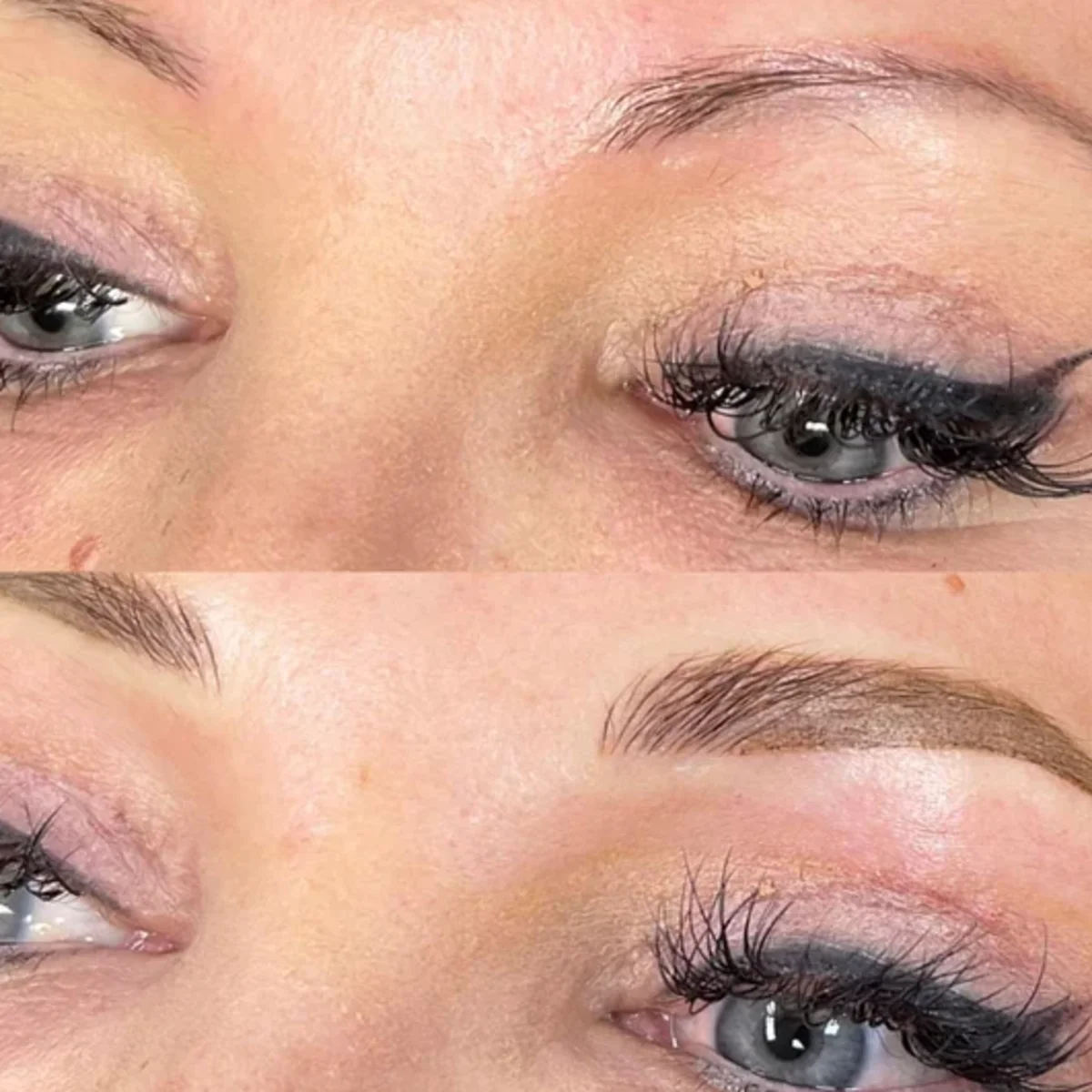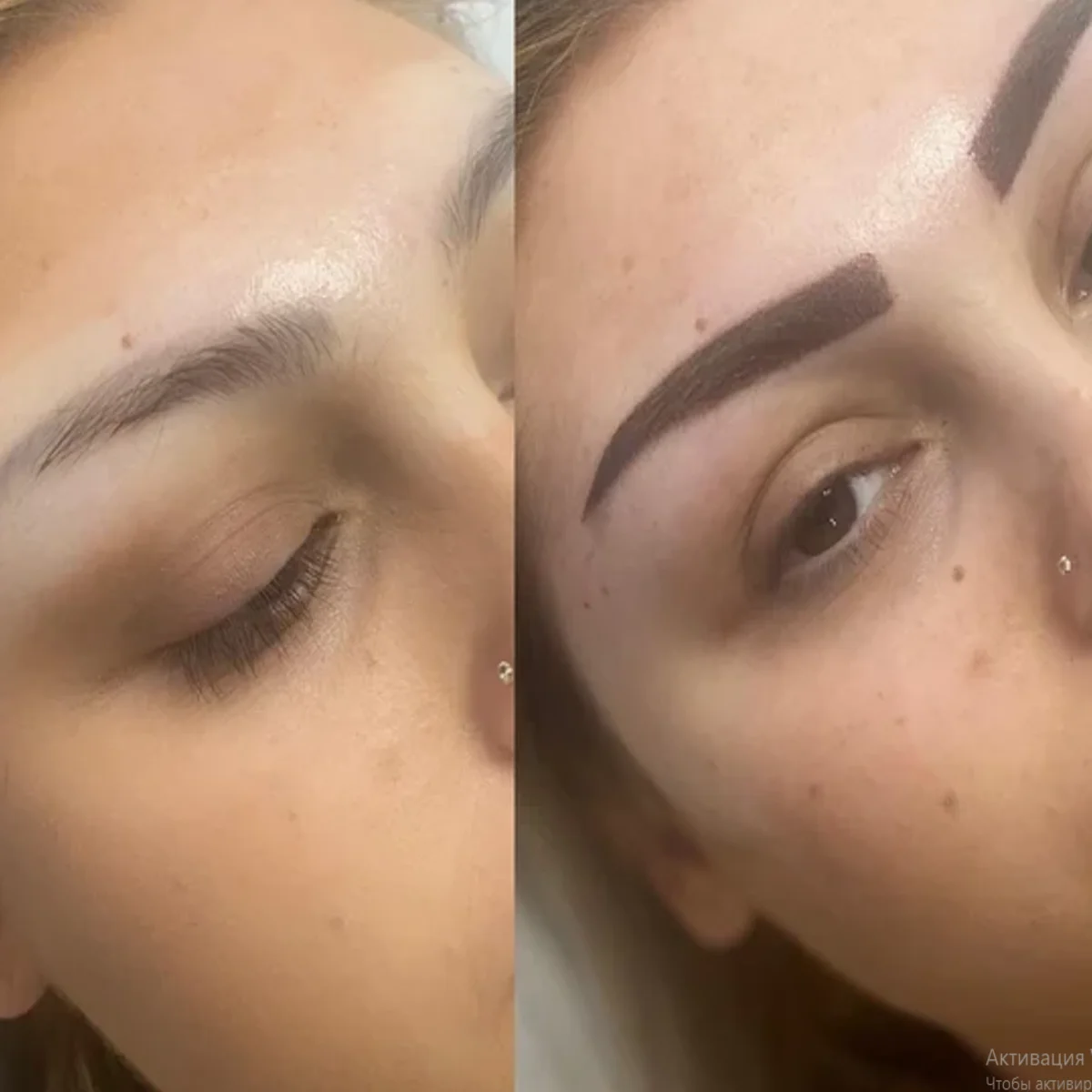Differences Between Microblading & Brow Feathering

Microblading eyebrows procedures, specifically microblading and feathering, have become increasingly popular. These techniques aim to enhance the natural appearance of eyebrows, resulting in a more defined and flattering frame for the face.
What is Microblading?
Microblading is a procedure that involves creating the illusion of fuller eyebrows by physically drawing on individual hair strokes.
Who may benefit from microblading?
Microblading is ideal for those with sparse or missing eyebrow hair. It can help those who need to draw on their eyebrows. However, it may not be suitable for individuals with certain health conditions such as heart conditions, diabetes, or skin diseases. It is also not recommended for those who have recently had Botox or a deep tan.
Who is a candidate for microblading?
Microblading eyebrows are best for those with sparse or missing eyebrow hair. It can help those who need to draw in their eyebrows. Individuals with conditions like alopecia or who have overplucked eyebrows may benefit from microblading. However, there are some disqualifications for the procedure. If you have a heart condition, diabetes, or skin issues, microblading may not suit you. Clients who have had Botox recently or have a deep tan should also avoid microblading.
What are the risks of microblading?
Microblading has risks, so it’s important that you follow the aftercare instructions given by your therapist. This is crucial in preventing infections since you get tattoos on your eyebrows. Bear in mind that follow-up sessions could potentially lead to scarring. It’s important not to pick any scabs that form after the procedure, as this can cause issues. If you’re pregnant, talk with your doctor before going through with microblading. Research the credentials of your therapist and check out their past work. Our professionals are licensed. Redness, swelling, itching, and bruising are other microblading risks. If you have any concerns, you should consult with a doctor.
A description of events during a microblading session
During the first microblading session, the practitioner will shape and style your eyebrows per your preference. After you approve, you will choose the pigment colour for your brows. Using a pen with 12-15 needles, the therapist will carefully fill your eyebrows to create a natural look. This session typically lasts from one and a half to three hours. A follow-up is recommended in four to six weeks to check healing and fading and do touch-ups. The practitioner will fix any gaps or issues with your brows during the follow-up, which usually takes one to two hours.
What is the level of pain?
The need for a topical analgesic before microblading varies. If you want one, you have to bring it yourself. It’s against the law for a professional to use an anesthetic not prescribed to you. Depending on the individual, pain levels during microblading can range from minimal to severe.
What is the duration of microblading?
The duration of microblading typically ranges from one to three years. Factors like skin type, age, lifestyle, and exposure to the elements can affect how long it lasts. Initially, the pigmentation is dark, but it will fade over time. Touch-ups are recommended every 1-1.5 years.
What is Eyebrow Feathering?
Eyebrow feathering, also known as microfeathering, is a form of microblading considered less permanent and invasive. This technique involves using a precise blade to cut and insert pigment into each incision, creating the illusion of individual hairs in sparse or missing brow hair areas.
Who is a candidate for Eyebrow Feathering?
Eyebrow feathering works best for those with full eyebrows but gaps or sparse areas. Avoid eyebrow feathering if you have oily skin, as it may affect pigment absorption and lead to discolouration. The same disqualifications for microblading apply to eyebrow feathering as well.
What are the risks associated with eyebrow feathering?
Microfeathering, like microblading, carries a risk of infection. The process involves using a blade to fill in your brows, creating small wounds on your skin. Your tattooist will give you instructions on caring for your brows. Other potential risks include redness, swelling, itching, and bruising. It is recommended that a doctor be consulted before getting microfeathering done.

Exploring the process of an eyebrow feathering session
An initial consultation is required before an eyebrow feathering session. During the consultation, the therapist will assess your brows to ensure there is enough natural hair to work with. This process typically lasts about an hour. It is important to allow your brows to grow before the session, as microfeathering uses your existing brow hair as a base, unlike microblading, which creates new brows from scratch. In the first feathering session, a blade is used to make precise, hair-like incisions that deposit dye into the top layer of your skin. This is done in the areas where your brows are sparse. A follow-up session is scheduled for six to eight weeks to touch up any areas where the pigmentation has faded or not taken. Each session typically lasts around two hours.
What is the level of pain?
The level of discomfort during eyebrow feathering can be reduced by using a topical anesthetic purchased from a chemist before the first session. Generally, the pain experienced during the procedure is minimal.
What is the duration of eyebrow feathering?
Eyebrow feathering typically has a shorter lifespan of around nine to 18 months than microblading.